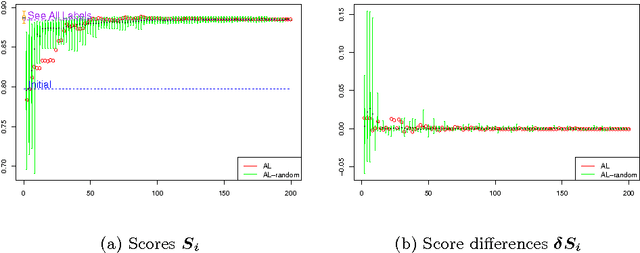Lewis Evans
Twitter Permeability to financial events: an experiment towards a model for sensing irregularities
Dec 14, 2023Abstract:There is a general consensus of the good sensing and novelty characteristics of Twitter as an information media for the complex financial market. This paper investigates the permeability of Twittersphere, the total universe of Twitter users and their habits, towards relevant events in the financial market. Analysis shows that a general purpose social media is permeable to financial-specific events and establishes Twitter as a relevant feeder for taking decisions regarding the financial market and event fraudulent activities in that market. However, the provenance of contributions, their different levels of credibility and quality and even the purpose or intention behind them should to be considered and carefully contemplated if Twitter is used as a single source for decision taking. With the overall aim of this research, to deploy an architecture for real-time monitoring of irregularities in the financial market, this paper conducts a series of experiments on the level of permeability and the permeable features of Twitter in the event of one of these irregularities. To be precise, Twitter data is collected concerning an event comprising of a specific financial action on the 27th January 2017:{~ }the announcement about the merge of two companies Tesco PLC and Booker Group PLC, listed in the main market of the London Stock Exchange (LSE), to create the UK's Leading Food Business. The experiment attempts to answer five key research questions which aim to characterize the features of Twitter permeability to the financial market. The experimental results confirm that a far-impacting financial event, such as the merger considered, caused apparent disturbances in all the features considered, that is, information volume, content and sentiment as well as geographical provenance. Analysis shows that despite, Twitter not being a specific financial forum, it is permeable to financial events.
When does Active Learning Work?
Aug 06, 2014



Abstract:Active Learning (AL) methods seek to improve classifier performance when labels are expensive or scarce. We consider two central questions: Where does AL work? How much does it help? To address these questions, a comprehensive experimental simulation study of Active Learning is presented. We consider a variety of tasks, classifiers and other AL factors, to present a broad exploration of AL performance in various settings. A precise way to quantify performance is needed in order to know when AL works. Thus we also present a detailed methodology for tackling the complexities of assessing AL performance in the context of this experimental study.
 Add to Chrome
Add to Chrome Add to Firefox
Add to Firefox Add to Edge
Add to Edge